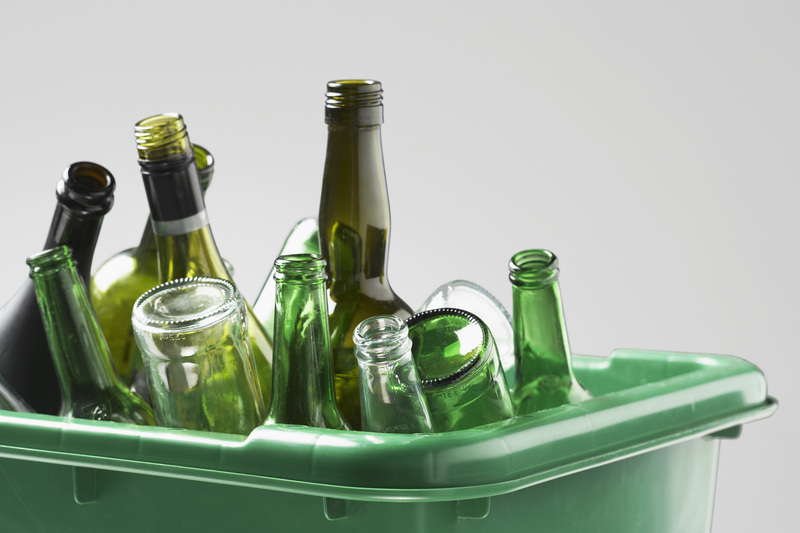How to Responsibly Dispose of Old Pots and Pans
Are you looking to upgrade your kitchen collection and wondering how to dispose of old pots and pans in an environmentally friendly way? Many of us accumulate a variety of cookware over the years, and when items become worn out, damaged, or simply obsolete, responsible disposal is critical. In this comprehensive guide, we'll explore the best methods to recycle, donate, or repurpose old cookware while minimizing your impact on the planet.
Why Should You Care About Responsible Disposal?
Many old pots and pans are made from metals and materials that can be recycled or reused. Unfortunately, millions end up in landfills each year, contributing to environmental pollution and resource waste. By learning proper ways to dispose of cookware, you help conserve resources and keep hazardous coatings and metals out of the earth.
Environmental Impact of Improper Disposal
- Non-biodegradable Materials: Metals, plastics, and nonstick coatings can take centuries to break down.
- Chemical Leaching: Damaged or broken nonstick pans may release chemicals into the soil and water supply.
- Resource Waste: Landfilling valuable metals is wasteful.

Assessing Your Old Pots and Pans
Before you toss anything, first evaluate the condition of each item. Not every piece needs to be thrown out! Use these criteria:
- Do they have significant warping or cracks?
- Is the nonstick coating chipped or peeling?
- Are the pots and pans still functional or just outdated for your needs?
If the cookware is still usable, it may be a candidate for donation or upcycling. Otherwise, it's time to look into recycling or disposal options.
Can Pots and Pans Be Recycled?
Most pots and pans are made from metals such as aluminum, stainless steel, or cast iron--all of which are widely recyclable. However, the process depends on local facilities and whether the cookware has additional materials, like plastic handles or nonstick coatings.
Recycling Metal Cookware
- Aluminum: Lightweight, corrosion-resistant, and infinitely recyclable.
- Stainless Steel: Highly durable and valuable for scrap metal recyclers.
- Cast Iron: Can be melted down and reused.
Steps for Recycling Old Cookware
- Check with Your Local Recycling Program: Many curbside recycling services do not accept cookware. Research local guidelines for scrap metal recycling.
- Remove Non-Metal Components: Take off plastic, rubber, or wooden handles. If the handles can't be removed, some recyclers may still accept the pan, but it's best to check.
- Look for a Scrap Metal Drop-Off: Municipal recycling centers and scrapyards often take old pots and pans as mixed metal.
- Ask About Nonstick Coatings: Pans with Teflon or ceramic coatings may need special processing, as the chemicals can be harmful during melting-down.
Donating Old Pots and Pans
If your cookware is still in good condition, donating is a wonderful way to extend its useful life. Many individuals, families, and organizations lack adequate kitchen supplies, so your old pans and pots could fill a real need.
Where to Donate Pots and Pans
- Local Shelters and Food Banks: Women's shelters, homeless shelters, and food programs often accept gently-used pots and pans.
- Charity Stores: Thrift shops such as Goodwill, Salvation Army, or Habitat for Humanity ReStores may take cookware donations.
- Community Centers: Churches or youth organizations sometimes host household item drives.
- Online Marketplaces: Give away items for free on platforms like Freecycle, Craigslist, Facebook Marketplace, or Nextdoor.
Be sure your donations are clean and in usable condition!
Creative Ways to Reuse and Repurpose Old Cookware
If your pans can't be recycled or donated, think creatively! Repurposing old pans and pots can add charm and utility to your home or garden. Here are some inspiring ideas:
Upcycling Ideas for Old Pots and Pans
- Planters: Turn old pots into quirky flowerpots or herb gardens for your patio.
- Birdbaths or Feeders: Create a unique birdbath or seed holder for your yard.
- Wall Art: Mount pans as vintage wall decor for a rustic kitchen vibe.
- Organizers: Hang pans with S-hooks for creative tool or utensil holders.
- Candle Holders: Small pans make charming bases for homemade candles.
How to Dispose of Nonstick Pans Responsibly
Nonstick cookware (Teflon or ceramic-coated pans) poses special challenges due to chemicals like PTFE or PFOA. Tossing them in the landfill risks leaching harmful substances into the environment. Here's what to do:
- Contact Local Waste Management: Some facilities accept coated cookware in small appliance or scrap metal collections. Always ask if they can process nonstick coatings safely.
- Mail-In Programs: Some cookware brands offer recycling programs for their old pots and pans. Visit the manufacturer's website to see if this is an option.
- Never Burn Nonstick Pans: This releases toxic fumes and is dangerous to your health and the environment.
Taking Pots and Pans to Scrapyards
If curbside pickup isn't available, metal scrapyards are your best bet for recycling old cookware. Here's what you need to know:
- Call Ahead: Not all scrapyards accept all items. Confirm what kinds of pots and pans they'll take.
- Sort by Metal: Separate aluminum, stainless steel, and cast iron pieces if possible. Some yards pay different rates for different metals.
- Prepare for Drop-Off: Remove any plastic, wood, or glass parts as much as possible.
What About Cookware with Wooden or Silicone Handles?
For pans or pots with mixed materials, follow these steps:
- Disassemble: If you can, remove plastic, wood, or silicone components. These often aren't recyclable but can sometimes be repurposed for other crafts.
- Recycle the Metal: Once removed, the metal part can go to the scrap yard or recycling center.
- Dispose of Non-Metal Parts: If the other materials aren't reusable, dispose of them in your regular trash.
Tips for Buying Sustainable Cookware in the Future
Once you've responsibly disposed of your old kitchenware, consider these tips for making more eco-friendly choices with new purchases:
- Opt for Recyclable Materials: Stainless steel, copper, and cast iron are highly durable and fully recyclable.
- Buy Quality Over Quantity: Invest in higher-quality cookware with replaceable parts, so you can extend their life.
- Avoid Hazardous Coatings: Look for brands that use safe nonstick alternatives or natural seasoning.
- Research Manufacturer Take-Back Programs: Some brands (like TerraCycle or certain cookware companies) let you send old products back for eco-friendly disposal.
Frequently Asked Questions on Cookware Disposal
Can Pots and Pans Go in the Recycling Bin?
Most municipal recycling programs do not accept cookware in regular curbside bins, as they're too bulky and contain mixed materials. Instead, use special scrap metal recycling programs or dedicated drop-off locations.
Is It Okay to Throw Pans in the Trash?
Only as a last resort! Throwing cookware in the landfill wastes resources and contributes to environmental harm. Choose recycling, donation, or upcycling instead whenever possible.
How Can I Tell What Material My Pots and Pans Are Made Of?
Check for a stamp or label on the bottom, or refer to the manufacturer's website. Stainless steel is non-magnetic and shiny, aluminum is lightweight, and cast iron is heavy and dark.
Are Nonstick Pans Hazardous to Recycle?
Yes, some nonstick coatings contain PTFE or PFOA chemicals, which are hazardous if incinerated or melted improperly. Always alert your recycling facility if your pan has a nonstick surface.

Summary: Best Practices for Disposing of Old Pots and Pans
- Assess Each Item: Only dispose if it's truly unusable or unsafe.
- Donate Usable Cookware: Give gently-used items to charity, neighbors, or online groups.
- Recycle Metal Pans: Use scrap yards or metal recycling centers for uncoated cookware.
- Handle Nonstick Pans Carefully: Contact your local facility for safe disposal options.
- Get Creative: Repurpose old cookware as planters, organizers, or DIY decor.
Conclusion: Help Protect the Planet with Responsible Cookware Disposal
Learning how to responsibly dispose of old pots and pans benefits not just your kitchen, but your entire community and the environment at large. Whether you choose to donate, recycle, or repurpose, your efforts help reduce landfill waste, keep toxic chemicals out of the earth, and ensure that valuable resources are put to good use. The next time you upgrade your cookware, remember: small actions make a big difference!
For more sustainable living tips and ways to dispose of kitchen items responsibly, explore your local waste management resources--and share your ideas with friends and neighbors!